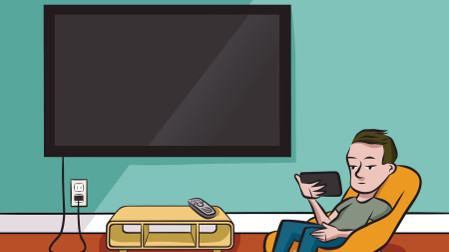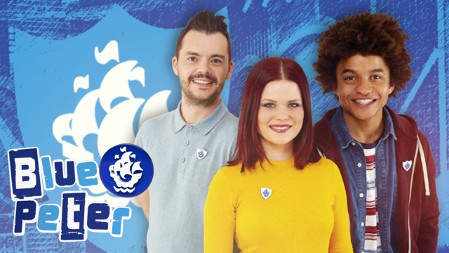Redefining Television
I recently read an article with a headline that posed the question “The Death of Linear Television?”

I have been writing long enough to know that headlines are designed to grab the attention of the reader as they are scanning the page (whether on paper or display) and entice them to read the rest of the article. I guess it worked in my case because I did read the story but I was more interested in looking for the incorrect assumptions then I was about getting the full story. I was pleased to read that a number of the folks quoted have what I would consider balanced views.
Let me share with you three facts that are in my view immutable. Life is linear. Life is analog. Life is finite. While we have created and used technology in media to digitally capture and distribute content for information and entertainment, we are still consuming in the linear, analog and finite world.
The change is more about the birth of new methodologies then it is about the death of old ones. It seems to be human nature to think and express momentous and non-momentous changes and events in absolute terms. To justify the United States’ entry into World War I, President Woodrow Wilson paraphrased author H. G. Wells by calling the current war as “the war to end all wars,” a pretty ironic statement given the history that has occurred since then. But even on the personal level, I have heard and may have said in my youth after breaking up with a girlfriend that I would never love again. Now, having been married to the same person for 40 or so years, probably not my most factual statement or prediction.
REFINEMENT TO WHAT ALREADY EXISTS
So what is happening in our business and what should we do about it? Well the first thing I suggest is to recognize that “television” is not the business any more than “broadcasting” is the business. Television is about the transmission of content to receivers and is traditionally thought of as a linear service. But that is based on the limitations of the technologies used for creating content, not the limitations of the underlying distribution technology. Digital capture, compression and packaging technologies now enable using television to transmit multiple content elements and packages, faster than real time. The methodology of broadcasting is also thought to be linear based on the same traditions and limitations from its earliest incarnations. These are but two of the tools or methodologies that are used to interact with the consumers. We will continue to use and refine these tools.
[What Are We Going to do With TV?]
As a local “television” station and a “broadcaster,” I look at ATSC 3.0 as a refinement to a tool that we are currently using and while it is an important tool, it certainly isn’t our only tool. The content that we create is certainly distributed using these tools as well as others. The real business is creating valuable content and using the distribution tools to insure that the consumer has access to the content, whether it is via traditional and linear methodologies and devices or via nontraditional and nonlinear methodologies and devices.
We must therefore understand what exactly our businesses are and adjust our practices to take advantage of the refinements in the tools and technologies that we and the consumers use in the creation, distribution and consumption of content.
Having worked closely with many of the brilliant engineers that have written the ATSC 3.0 standard, I have to say that I am amazed at the capabilities that this new standard enables. I also certainly hope and believe that as it is adopted by the “broadcasters” and the consumers, it will be a tremendous success. However, I think it is important to realize that regardless of how great the success of ATSC 3.0 is, it will be one of the tools used by content creators and content consumers, not the only tool.
WHATEVER WORKS

In the summer of 2017, the BBC reported that, according to linear channel measurements, there were zero viewers for a repeat episode of the “Blue Peter” children’s magazine show.
Going back to the article that inspired me to write this column, one of the elements in it was something that happened in the summer of 2017 at the BBC. They aired a repeat episode of a children’s magazine show and based on the linear channel measurement for that airing, no one watched it. I think we all would probably freak out if we aired a piece of content and no one watched it.
So is this actually proof that linear television is indeed dying? If you look at the piece of content, it was actually viewed linear during its initial broadcasts by more than a quarter million people, played over the top by some 39,000 people and the show’s website had about 1.5 million kids visit. The viewers were using the tools that made the most sense for them to consume the content and get the job done. Sometimes it was the traditional tool and sometimes the non-traditional tool.
One last thing to touch on and it has to do with the traditional tools and the non-traditional tools. Don’t make the error of impressing your views and values on to others. For those of us who have been involved in the business for decades, viewing “television” content on a smartphone is consuming traditional content on a non-traditional device. For the kids in the U.K. watching the children’s magazine show via the iPlayer on their smartphone, there is no traditional or non-traditional content or technology involved.
Bill Hayes is director of engineering for Iowa Public Television.
For a comprehensive list of TV Technology’s ATSC 3.0 coverage, see our ATSC3 silo.
Get the TV Tech Newsletter
The professional video industry's #1 source for news, trends and product and tech information. Sign up below.
Bill Hayes is the former director of engineering and technology for Iowa PBS and has been at the forefront of broadcast TV technology for more than 40 years. He’s a former president of IEEE’s Broadcast Technology Society, is a Partnership Board Member of the International Broadcasting Convention (IBC) and has contributed extensively to SMPTE and ATSC. He is a recipient of Future's 2021 Tech Leadership Award and SMPTE Fellow.

